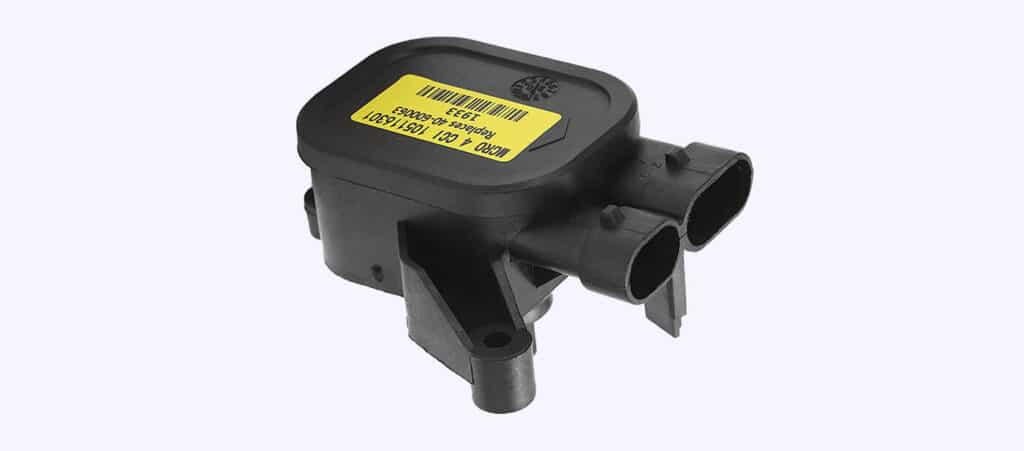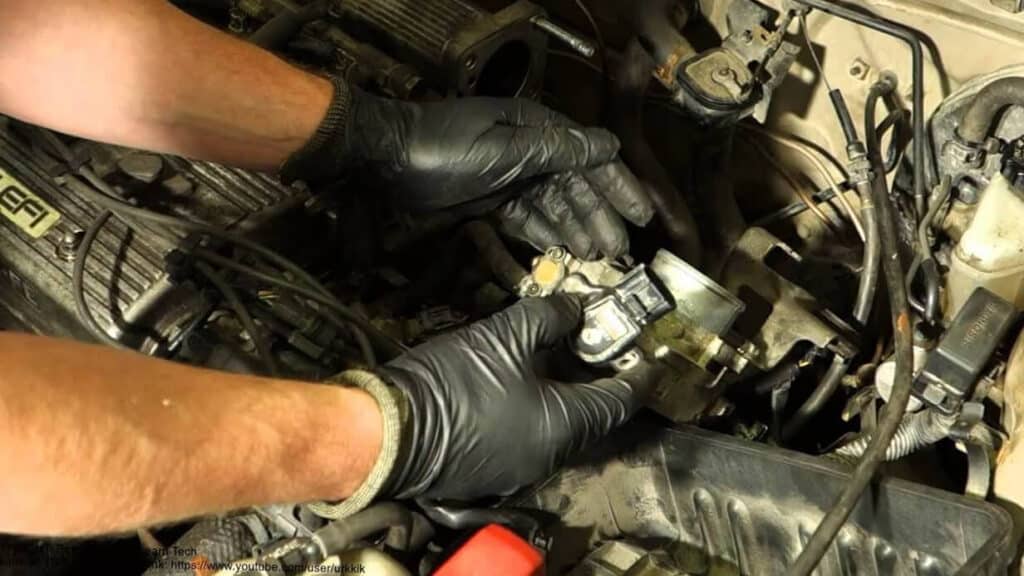Introduction
Are you feeling like you’ve lost your connection with your car? Do you find yourself flooring the gas pedal, but your car responds as if you’ve barely touched it? You might have a faulty throttle potentiometer.
What is a Throttle Potentiometer?
The throttle potentiometer (also known as the throttle position sensor) is a key component in your car’s engine. It monitors the position of your vehicle’s throttle and communicates this data to the engine control unit (ECU). This data allows the ECU to manage fuel injection and ignition timing accurately, optimizing your vehicle’s performance and fuel efficiency.
How Much Will it Cost to Service a Throttle Potentiometer in Canada?
In the Canadian landscape, servicing a throttle potentiometer typically falls within a range of $100 to $200. This includes both the cost of the part ($20 to $80) and the labour (averaging between $80 to $120). The task typically takes 1-2 hours to complete, depending on your vehicle’s specific configuration and the mechanic’s skill level.

What are the Symptoms of a Faulty Throttle Potentiometer?
Symptoms of a faulty throttle potentiometer can include:
• Inconsistent Throttle Response: As the potentiometer directly affects throttle response, a fault can cause it to become erratic or inconsistent. This can be observed as sudden surges or drops in power.
• Check Engine Light: The Check Engine Light may illuminate on your dashboard if the car’s computer detects an issue with the throttle potentiometer.
• Poor Fuel Efficiency: A malfunctioning potentiometer can lead to a less efficient air-fuel mixture, resulting in poorer fuel efficiency than normal.
• Difficulty in Acceleration: If your car has trouble accelerating or doesn’t respond as you expect when you press the accelerator, it could be a sign of a faulty throttle potentiometer.
• Engine Stalling or Misfiring: In severe cases, a faulty potentiometer can cause the engine to stall or misfire, as the car’s computer struggles to accurately control the fuel injection system.
• Car Goes into Limp Mode: In some cases, to prevent further damage, your car might go into a ‘limp mode’ where power to the engine is severely limited.
How Long Does a Throttle Potentiometer Last?
A throttle potentiometer usually lasts between 160,000 to 240,000 kilometers. Of course, this range can fluctuate based on your specific vehicle, driving habits, and routine maintenance practices.
How Does a Throttle Potentiometer Become Defective?
A throttle potentiometer can become defective due to several reasons:
• Wear and Tear: The throttle potentiometer is an electrical component that experiences wear over time. The internal components can deteriorate, causing inaccurate readings or complete failure.
• Dirt and Debris: The potentiometer is situated in an area that can be prone to dust, dirt, and debris. Over time, these contaminants can interfere with the proper functioning of the potentiometer, leading to incorrect readings or failure.
• Moisture: If moisture gets into the potentiometer, it can cause short circuits or corrosion, affecting the sensor’s function.
• Electrical Issues: The potentiometer works in conjunction with the car’s electrical system. Any electrical issues, such as short circuits or voltage problems, can directly impact the potentiometer’s functioning.
• Damage: Physical damage can occur from road debris, accidents, or during other repair or maintenance work, which can affect the potentiometer’s operation.
• Poor Quality Replacement Parts: If the potentiometer has been replaced with a low-quality part, it may fail prematurely. Always ensure replacement parts are of high quality and suited to your specific vehicle model.
How Can a Faulty Throttle Potentiometer Affect Other Systems in the Car?
• Erratic Acceleration: A faulty throttle potentiometer can cause erratic and uncontrolled acceleration which can affect the stability and control of the car.
• Poor Fuel Efficiency: Incorrect information from a faulty throttle potentiometer can lead to the engine consuming more fuel than necessary, significantly affecting fuel efficiency.
• Engine Performance Issues: The engine relies on the throttle potentiometer for the accurate operation of systems such as fuel injection and ignition timing. A malfunction can lead to poor engine performance, such as rough idling, misfires, or stalling.
• Damage to Catalytic Converter: Over time, poor fuel mixture due to a faulty throttle potentiometer can result in an overheated catalytic converter, leading to possible damage.
• Inaccurate Emission Levels: If the throttle potentiometer is defective, it may lead to higher than acceptable levels of exhaust emissions, affecting the car’s emission control system and possibly failing an emissions test.
• Trigger “Limp Mode”: In some cases, a faulty throttle potentiometer can cause the car’s computer to activate the “limp mode” to prevent further damage to the engine. This restricts the car’s speed and performance.
Is it Safe to Drive with a Faulty Throttle Potentiometer?
Driving with a faulty throttle potentiometer, also known as a throttle position sensor, can be risky and is generally not recommended. The throttle potentiometer is a key component in your vehicle’s engine management system. It monitors the position of the throttle, providing feedback to the engine control unit (ECU) about the throttle’s position and speed of movement. This information is crucial for functions such as fuel injection, ignition timing, and other engine operations that maintain the car’s performance, fuel efficiency, and emissions. If the throttle potentiometer is faulty, it could provide inaccurate information to the ECU, potentially leading to poor engine performance, erratic acceleration, and increased fuel consumption. In more severe cases, it could even cause the engine to stall while you’re driving, which is a serious safety risk.
The risk of driving with a faulty throttle potentiometer varies depending on the nature and severity of the fault. In some cases, the vehicle’s “limp mode” may be activated to protect the engine and prevent further damage, reducing engine power and limiting the speed at which you can drive. This can make it safer to drive short distances, but it is still not ideal for regular or long-distance driving. Ultimately, if your throttle potentiometer is malfunctioning, it’s crucial to get it checked and replaced as soon as possible. It’s always best to prioritize safety and prevent potential damage to other parts of the engine.

How Can I Make My Throttle Potentiometer Last Longer?
• Schedule regular vehicle inspections and service your engine routinely.
• Keep your engine clean, avoiding any unnecessary oil or dirt buildup.
• Practice smooth and consistent driving, avoiding rapid starts and stops.
Can a Mobile Mechanic Service a Throttle Potentiometer?
Absolutely! A mobile mechanic can bring their expertise to you, whether that’s at home or your workplace. Servicing a throttle potentiometer doesn’t require extensive garage equipment, so it’s perfectly suited to mobile mechanic services.
Conclusion: Throttle Potentiometer Servicing
The throttle potentiometer might be a small device, but it plays a significant role in keeping your ride smooth and responsive. Attending to any hitches in its performance promptly can save you from more substantial, more costly problems down the road. When it comes to your car’s health, an ounce of prevention is worth a pound of cure!
Next Steps
Book Your Throttle Potentiometer Servicing
The service most frequently booked by those who read this article is Throttle Potentiometer Servicing. Uchanics’ expert technicians make the process even more convenient by bringing the service right to your doorstep. We perform this job at your home or office, covering over 40 cities in Ontario, including Toronto, Mississauga, Brampton, Oshawa, Ajax, Scarborough, and more. With our professional expertise, we ensure accurate diagnosis and precise servicing of your throttle potentiometer. Choose Uchanics for your Throttle Potentiometer Servicing and experience unparalleled convenience and top-quality service.
